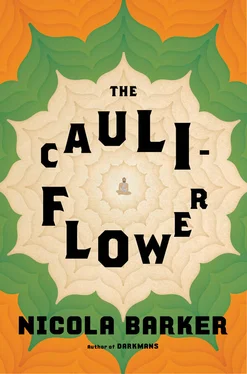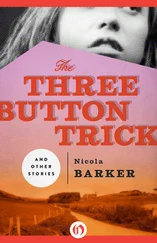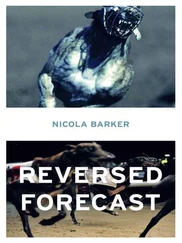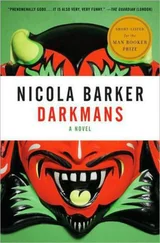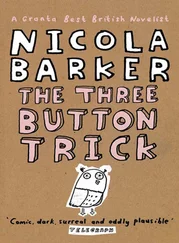Only he himself, Narendra Nath Datta (it seems to the gilded youth), has the almost divine power to activate him now.
Rational explanations for the previous incident …
How did this happen?
Hunger? The heat? Exhaustion?
It’s incomprehen—
Waaaah!
Part 3.
After several months …
Among Sri Ramakrishna’s circle is a man called Pratap Chandra Hazra. Sri Ramakrishna doesn’t especially like him. He finds him “dry,” or lacking in sincere spiritual inspiration. Hazra is well read and perfectly intelligent, but something of a pedant (a quality Sri Ramakrishna especially loathes). And even though he has a wife and a family in dire financial need back in the place he calls home (somewhere near Hriday’s native village of Sihar), he still spends most of his time at the Dakshineswar Kali Temple in the orbit of the famous saint, loudly and piously practicing japam on Ramakrishna’s verandah and doing his best to attract attention to himself.
Ramakrishna is often irritated by Hazra and what he considers to be his unhelpful influence over some of his newer (and most precious) devotees. The saint is not averse to making the odd sarcastic aside at Hazra’s expense. Although he has finally come to realize (and how could he not?) that Hazra is simply a part of the Mother’s divine play. He accepts that Hazra has been sent to plague him for a reason, as a lesson — in much the same way that Krishna’s most passionate devotee, Radha, was persecuted by Jatila, her mother-in-law, so that her constant meddling and interfering might make Radha love Krishna still more — and that Hazra is therefore an essential part of the Mother’s divine scheme. And this knowledge — this insight — makes him surprisingly tolerant of Hazra, even to feel, at some level, a measure of gratitude toward him.
It is, nonetheless, a source of profound irritation to him that Narendra, his most beloved devotee (the savior of mankind — the devotee Ramakrishna knows will bring his message to the world), is great friends with this flawed individual and consequently open to his malign influence. Often he will struggle to get the teenager’s attention (the teenager, as he settles into his relationship with Sri Ramakrishna and becomes increasingly and delightfully aware of his own huge significance to him, will be cynical, argumentative, dismissive, and cruel to the guru ). He is arrogant by nature. He will sometimes make snide remarks about the guru ’s lack of a formal education.
The guru has a very particular way of guiding people to spiritual fulfillment. You might call it the “pick and mix” technique. He gets to know people (inspecting their faces, their hands, their tongues, their feet), asks them countless questions, then decides what spiritual approach most suits their needs. Ramakrishna is promiscuous by nature. There is no one route. No one-size-fits-all approach. And because Narendra Nath Datta is (in the guru ’s mind, and in fact) destined to be his future mouthpiece to the world, he chooses to initiate this special disciple into Vedantic non-dualism, a highly difficult, obtuse, and intellectual doctrine which teaches that the disciple and God are identical.
But it isn’t all to be plain sailing. Hazra and the teenager certainly see to that. On one occasion Sri Ramakrishna comes outside onto his balcony to find the two of them engaged in a bitchy discussion about the credibility of the non-dualist approach. Narendra is pointing to a water pot which sits on the floor before them and is saying, “Is this water pot God ?! Is this cup God ?! Are you God ?! Am I God ?!”
They are laughing together, scornfully, at the very thought.
“What are you laughing at?” the childlike guru wonders, sweetly, and as he speaks he taps Narendra lightly on the shoulder, once again turning the teenager’s entire universe on its head.
Narendra immediately becomes conscious of the fact that the whole world is God. The. Whole. World.
God!
He spends the entire day in this bizarre, heightened state. He tells nobody what is happening to him. He just hopes — desperately hopes — that it will wear off. But it doesn’t. He travels home. Everything is God. He sits down to eat. The plate is God. The food is God. His mother who serves him is God. Her words are God.
And it continues. He attends college. He walks the streets. Everything is God. A carriage approaches him as he crosses the road — at high speed — but he can barely bring himself to move out of its path. It is God. And he is God. So he is the carriage. And they are all God.
Experts call this a state of “divine intoxication.” It’s how Sri Ramakrishna feels all the time. The guru lives in a perpetual state of divine intoxication (almost to the point of finding it a nuisance).
As a part of his intoxication Narendra has lost all sense of feeling in his hands and his feet. This makes him anxious. And as the ecstasy fades, over days, weeks, he continues to worry about it. Now he feels like he is trapped inside in a strange kind of living dream. He feels distanced. Numb. Weird. Woolly. As he walks down a street one day he falls to his knees and starts hitting his head against a set of railings to try and establish whether they are real or not.
His poor mother has lost all hope for him. That pesky guru ! That pesky, pesky guru !
“My poor, darling Naren … he won’t live long,” she murmurs.
“ Sadhana is reached
When you witness God’s presence
In everything.”
Part 4.
1885, the Cossipore garden house, not long before Sri Ramakrishna’s death
Sri Ramakrishna is lying upstairs, desperately ill, when a certain amount of commotion erupts downstairs. The saint’s faithful diarist and scribe, modestly known to the world simply as M (but known in day-to-day life as the much-loved and respected, if incredibly humble, Calcuttan headmaster Mahendra Nath Gupta) kindly informs the saint of what is unfolding.…
Narendra Nath Datta, it transpires, has been sitting on the ground floor, meditating. And as he meditates he has the curious sensation of an intense, fiery warmth at the back of his head. He then loses all consciousness and experiences what is generally perceived to be the ultimate spiritual state — described by seasoned Vedantists as nirvikalpa samadhi . During this form of ecstasy the embodied soul is completely effaced and unified with God. It is known to be a rare, extraordinary, mind-blowing, and ego -shattering phenomenon. Sometimes — indeed, often — people die when it happens to them. In fact — if we can fast-forward seventeen years — Narendra himself will die (at the horribly premature age of thirty-nine) the next time he enters this state. Although, following his first experience, Sri Ramakrishna calls him upstairs and tells him that he will not enter the state again until the Mother’s work has been accomplished. And he is right. “This revelation will stay under lock and key,” the guru says, holding aloft an imaginary key, kissing it, and then placing it into an imaginary pocket lying close to his heart.
But this is still Narendra’s first experience of nirvikalpa samadhi . We have no idea how long his consciousness is lost to it in real time. All that we do know is that when he begins to regain consciousness, he does so only partially. He can open his eyes and see his head (the tip of his own nose, his tongue), but the rest of his body is now invisible to him.
And this is the source of all the commotion. Narendra, in a panic, is crying out: “Where is my body? Where is my body?”
Читать дальше
